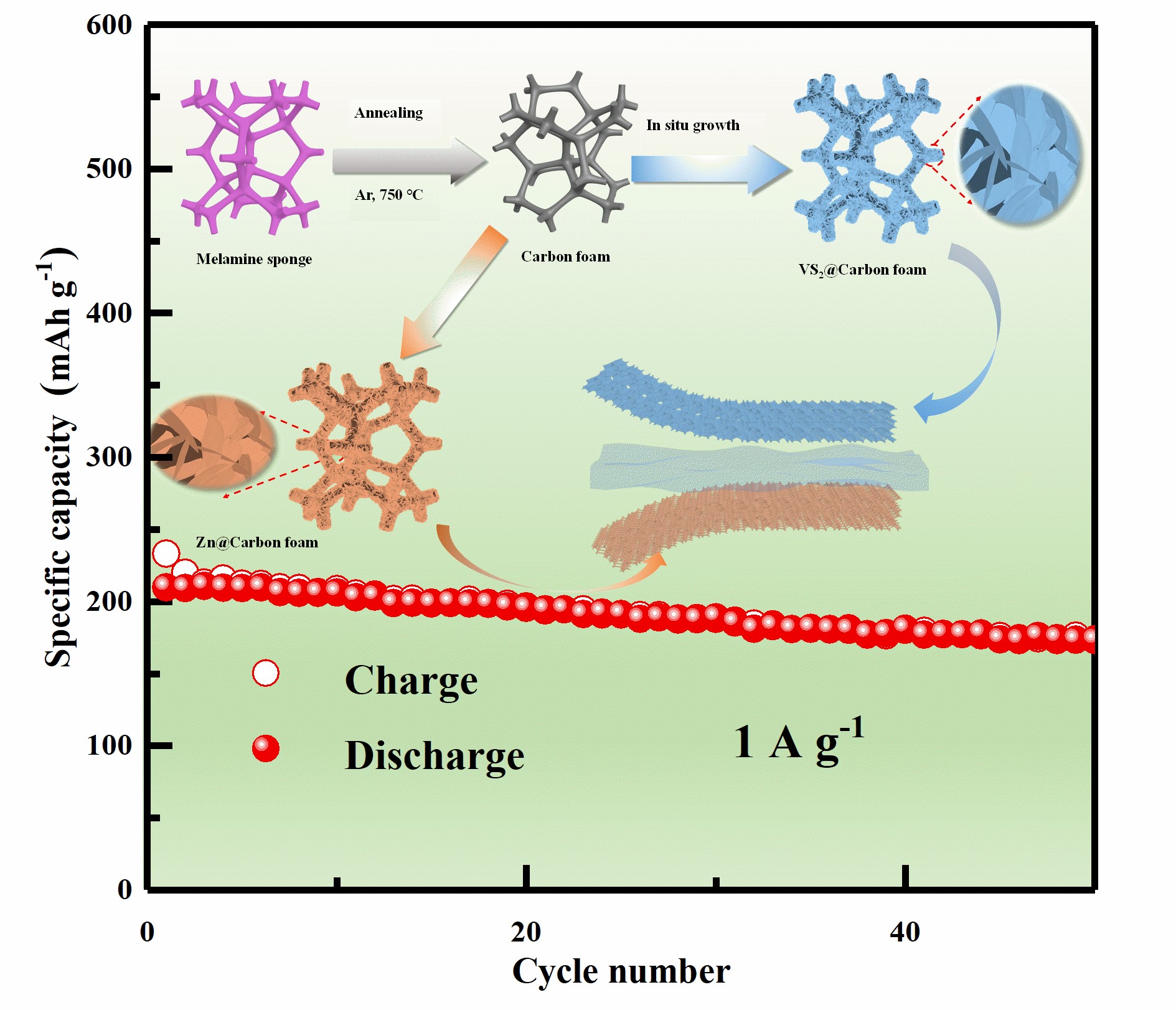
According to a research published in Small recently, a team led by Prof. ZHAO Bangchuan from Hefei Institute of Physical Science (HFIPS), Chinese Academy of Science (CAS) fabricated a flexible VS2 material (VS2@CF) by growing the VS2 nanosheet arrays on carbon foam (CF) using a simple hydrothermal method.
In recent years, wearable energy storage devices have become indispensable in our lives owing to their vast application foreground. Flexibility and security are two important points of flexible battery to focus on.
"Battery is like a hamburger. Cathode and anode are like the two slices of bread, and the electrolyte is the fillings," explained MAO Yunjie, first author of the paper, "our solution is to prepare a low-cost flexible substrate CF by carbonizing melamine foam, and made the flexible cathode (VS2@CF) and anode (Zn@CF). Then we used a self-healing gel (PVA/Zn (CF3SO3)2) as the electrolytes."
In this way, they obtained a quasi-solid zinc ion battery with good flexible and self-healing properties.
The secret to their success is the novel aqueous Zn-storage flexible cathode material VS2@CF, which was made by one-step hydrothermal method. The cathode shows rich actives sites, good hydrophilicity, high electronic/ionic conductivity, large surface area and flexible architecture.
The VS2@CF cathode delivers an exceptional rate capability and ultralong cycling durability. Impressively, the flexible quasi-solid-state zinc ion batteries employing the VS2@CF cathode, Zn@CF anode and PVA/Zn (CF3SO3)2 self-healing gels can still be charged and discharged normally under different bending angles and well self-healing properties.
The CF provided an inexpensive flexible electrode substrate for flexible energy storage devices, and the PVA/Zn (CF3SO3)2 self-healing gels provided a new idea for the design of wearable electronic devices, according to the team.

A flexible self-healing quasi-solid-state zinc ions battery. (Image by MAO Yunjie)